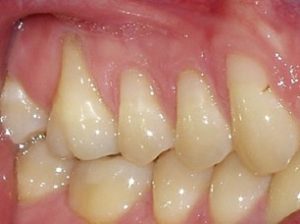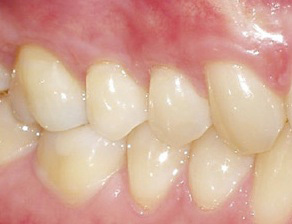Gum Grafting
If you are starting to notice that your teeth look a bit longer than they used to or you are frequently experiencing sensitivity to hot and cold foods or sugar, you may have receding gums. This condition causes a portion of your tooth’s root to be exposed, and occurs so gradually and you may not notice that it is happening.
Causes of Gum Recession
Periodontal disease is a common cause of receding gums. There are several risk factors for periodontal disease including inadequate oral hygiene, hormonal changes, genetic makeup, diabetes, and other illnesses. Additionally, smokers are four times more likely to develop periodontal disease compared with nonsmokers.
Gum recession can also be caused by aggressive or improper brushing technique, friction caused by tongue and lip piercings, pressure exerted on your teeth from clenching or grinding, and occasionally the forces brought on by misaligned teeth.
Treatment for Receding Gums
Receding gums caused by gum disease require a thorough professional cleaning that may include root planing and scaling to completely remove bacterial plaque and tartar buildup from your teeth and root surfaces. These procedures will help your gums heal, preventing any further recession.
Once the source of the problem is resolved, the gums will be assessed to determine if there is an adequate amount of healthy gum remaining to protect the tooth. If there is, modifying home-care practices may be the only recommended treatment. However, if the recession is significant and progressive, the first line of defense against bacterial infection and tooth loss is now compromised and gum grafting may be recommended. This procedure not only repairs the damaged area, but helps prevent additional infection.
Types of Gum Grafts
The primary goal of any gum grafting procedure is to provide a stable amount of gum tissue around the root; the secondary goal is to cover any exposed root surfaces. Gum grafting can be performed using an allograft (medically processed tissue from a human donor), or an autograft (tissue from the patient). Autograft procedures are categorized as follows:
- The most common type of grafting procedure is connective tissue grafting. These types of grafts can be used to treat one or more areas of recession. A small flap of tissue is taken from the roof of the mouth and stitched over the area of exposed root.
- Free gingival grafts are similar to connective tissue grafts except that the replacement tissue is taken directly from the palate.
- Pedicle grafts utilize the tissue adjacent to the tooth in need of repair.
Depending on the extent of the recession, a second procedure may be needed to achieve the desired results.
Benefits of Gum Grafting
Gum grafts reduce gum recession and bone loss as well as providing additional benefits. Once healed, you will find that your teeth are less sensitive, especially to hot and cold foods. Furthermore, the roots of your teeth are better protected against decay, and your renewed gum line will allow you to smile and speak with confidence.
If you feel your gum line is receding and you are beginning to experience symptoms of sensitivity, reach out to our dental professionals for a complete evaluation.






